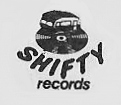Shifty Records

Founded by Lloyd Ross and Ivan Kadey, Shifty Records was a South African anti-apartheid record label which existed for over a decade beginning in 1982. In 1986 Kadey left South Africa and became partner with the Waterland Design Group in Hollywood, designing studios at Capitol Records, Virgin Tokyo, Sony/Epic Santa Monica, and many other recording venues. At this time Warrick Sony bought in as partner with the purchase of recording equipment.
Aimed at providing a platform for independent music with a social message, Shifty was an outlet for South African musicians opposed to apartheid. As a result, Shifty struggled to gain exposure on the radio stations of the Broederbond-controlled South African Broadcasting Corporation. Its anti-establishment stance was appealing to young and politically marginalized South Africans. This was evident when poet Mzwakhe Mbuli's unadvertised Change is Pain went gold after the apartheid regime banned possession and distribution of the album.[1]
The label helped establish boerepunk and the alternative Afrikaans genre at a time when it was a reflex to stereotype all Afrikaners as supporters of the National Party. Operating from a caravan hitched to a Ford V6 truck, the Shifty studio produced an album every two months until 1993.
Kontaktnätet, a Swedish non-governmental cultural organisation financially supported Shifty Records from 1986 to 1992 and held various manifestations in Sweden for the company and the various artists associated with Shifty.
Artists
Artists appearing on the label included:
- Koos Kombuis
- The Genuines
- Happy Ships
- Isja
- James Phillips & The Cherry Faced Lurchers
- Bernoldus Niemand en Die Swart Gevaar, AKA James Phillips
- Corporal Punishment
- Jennifer Ferguson
- Johannes Kerkorrel
- Kalahari Surfers
- National Wake
- Noise Khanyile
- Sankomota
- Simba Morri
- Tananas
- Vusi Mahlasela
- Winston's Jive Mixup[2]
- Robin Auld
Shifty Records often made use of a core group of musicians who appeared on different artists' recordings as support instrumentalists, e.g. drummer Ian Herman and trombonist Jannie "Hanepoot" van Tonder who can both be heard on many albums from the Shifty Catalogue.
See also
- List of record labels
- Artists United Against Apartheid
- Market Theatre (Johannesburg)
- Music of South Africa
- Recommended Records and Rock in Opposition
- United Democratic Front
References
- ↑ "Mbuli, Mzwakhe (South Africa)". music.org.za. Retrieved 25 April 2013.
- ↑ "Winston's Jive Mixup by Winston's Jive Mixup". Rhythm Music Store. Archived from the original on 26 February 2012. Retrieved 25 April 2013.